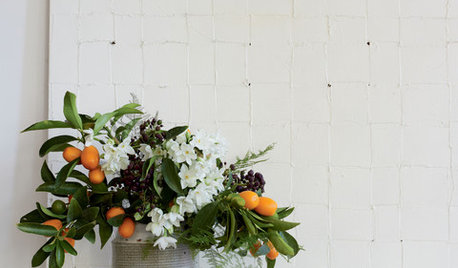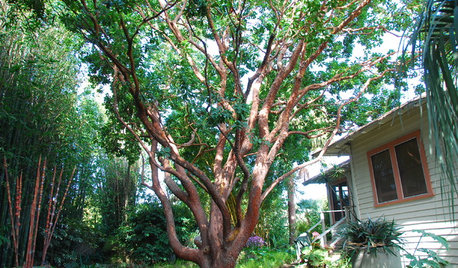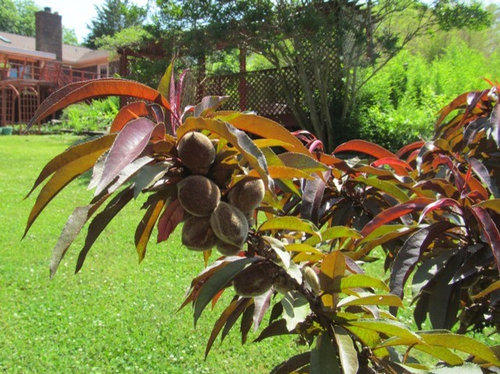Unknown (to me) fruit bearing tree
mownie
9 years ago
Related Stories

FARM YOUR YARDIf You Have Room for Only One Fruit Tree ...
Juice up a small garden with one of these easier-care or worth-the-effort fruit trees for a mild climate
Full Story
EDIBLE GARDENSHow to Grow 10 Favorite Fruit Trees at Home
Plant a mini orchard in fall, winter or early spring to enjoy fresh-off-the-tree fruit the following year
Full Story
GARDENING GUIDESGreat Design Plant: Grow Blueberries for Their Fruit and More
Eastern gardeners should consider growing blueberry plants for their delicious fruits, bee-friendly spring blooms and brilliant fall foliage
Full Story
DECORATING GUIDESPut Your Best Fruit Forward in Splendid Fall Arrangements
Luscious, colorful and unbeatably fresh, fruit-centered arrangements bring welcome flavor to fall home decor
Full Story
EDIBLE GARDENSHow to Add an Apple Tree to Your Edible Garden
Readily available, beautiful and fragrant, apple trees offer four-season interest along with crisp, juicy fruit
Full Story
GARDENING GUIDESHow to Keep Your Citrus Trees Well Fed and Healthy
Ripe for some citrus fertilizer know-how? This mini guide will help your lemon, orange and grapefruit trees flourish
Full Story
EDIBLE GARDENSHow to Grow Your Own Peaches and Nectarines
Make gardening a little sweeter with these juicy fruits, which you can eat after plucking or preserve for later
Full Story
FRUIT TREESHow to Grow Your Own Persimmons
Sturdy and easy to care for, these trees offer bright fruit through winter — and keeping them in bounds is no sweat
Full Story
TREESGreat Design Plant: Arbutus 'Marina'
Twisted trunks and snazzy fruit bring wild, all-year beauty to the garden — just keep this small tree away from the lawn
Full Story
GARDENING GUIDESWhen and How to Plant a Tree, and Why You Should
Trees add beauty while benefiting the environment. Learn the right way to plant one
Full StoryMore Discussions







agrocoders
mownieOriginal Author
Related Professionals
Deer Park Landscape Architects & Landscape Designers · Vernon Hills Landscape Architects & Landscape Designers · Newcastle Landscape Architects & Landscape Designers · Allentown Landscape Contractors · Berkeley Heights Landscape Contractors · Burlington Landscape Contractors · Clark Landscape Contractors · Golden Landscape Contractors · Harrisburg Landscape Contractors · Lynn Landscape Contractors · Melrose Landscape Contractors · North Potomac Landscape Contractors · Ocoee Landscape Contractors · Old Saybrook Landscape Contractors · Wickliffe Landscape ContractorsScott F Smith
agrocoders
drew51 SE MI Z5b/6a
agrocoders
drew51 SE MI Z5b/6a
mownieOriginal Author
raee_gw zone 5b-6a Ohio
mownieOriginal Author
drew51 SE MI Z5b/6a